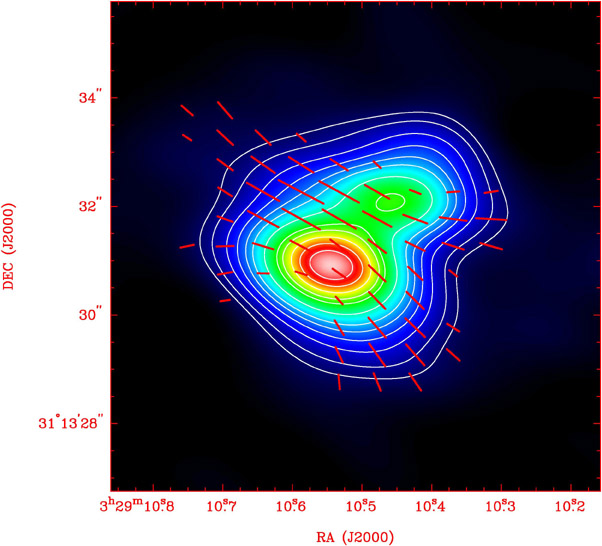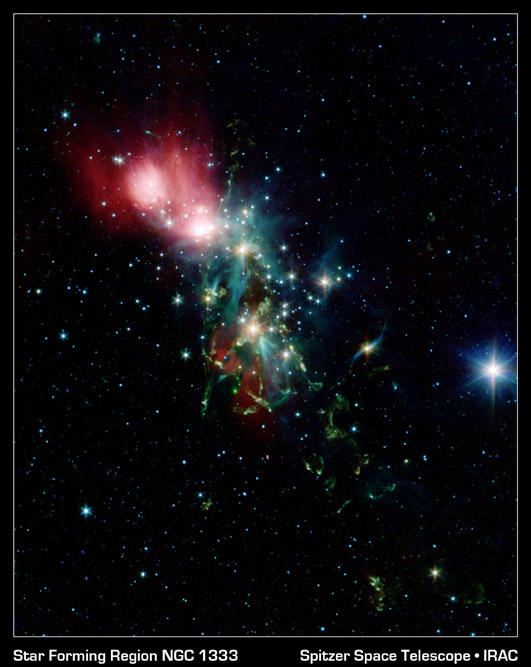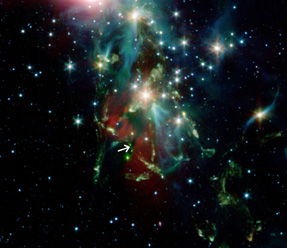Image List
-

The protostellar system NGC 1333 IRAS 4A is the first textbook example of an hourglass-shaped magnetic field (shown by dashed red lines on this color-coded submillimeter image) in a star formation region. The pear-shaped green and red region marks the locations of two still-forming stars. Gravity is pulling the gas and dust of this interstellar cloud clump inward, warping the magnetic field in the process. Taken with the Smithsonian's Submillimeter Array, this image is about 7 arcseconds on a side, which translates to a physical size of 2,700 astronomical units (using a distance to the system of 980 light-years).
J. Girart (CSIC-IEEC), R. Rao (ASIAA) and D. Marrone (CfA) -

The star-forming region NGC 1333 contains dozens of new stars like the Sun but less than 1 million years old. Spitzer's IRAC camera reveals those stars, as well as warm dust glowing red and bright green shock fronts in this color-coded infrared image. Its proximity to Earth and young age make NGC 1333 an ideal laboratory for studying low-mass star formation.
NASA/JPL-Caltech/R. Gutermuth & A. Porras (CfA) -

In this cropped portion of the Spitzer image shown above, the location of IRAS 4A is marked with an arrow. Nothing is visible at this location; IRAS 4A remains cloaked in its dusty cocoon so infrared emission is minimal. The Submillimeter Array can study emission from the dust itself. By examining the polarization of that emission, the shape of the magnetic field is revealed.
NASA/JPL-Caltech/R. Gutermuth & A. Porras (CfA)